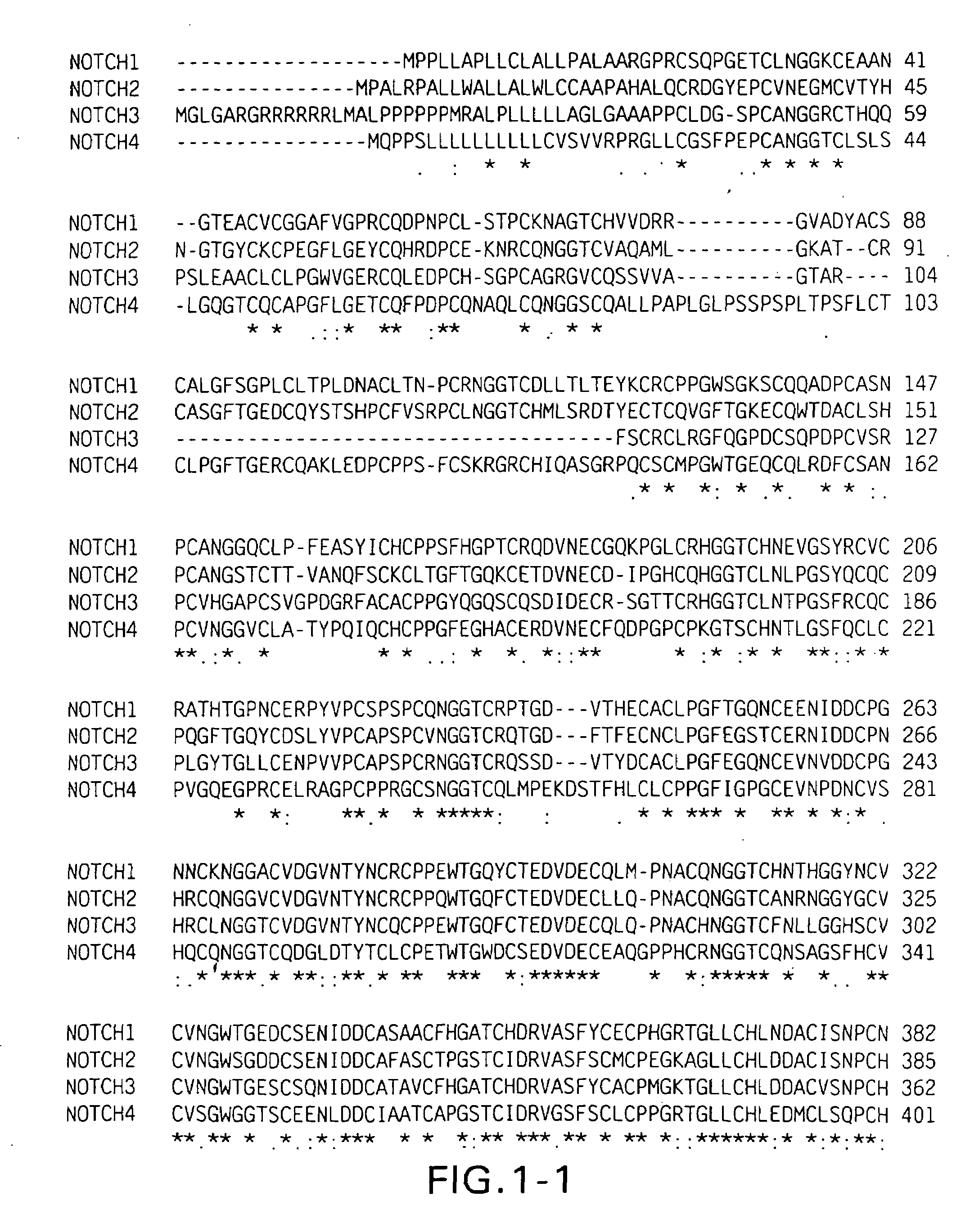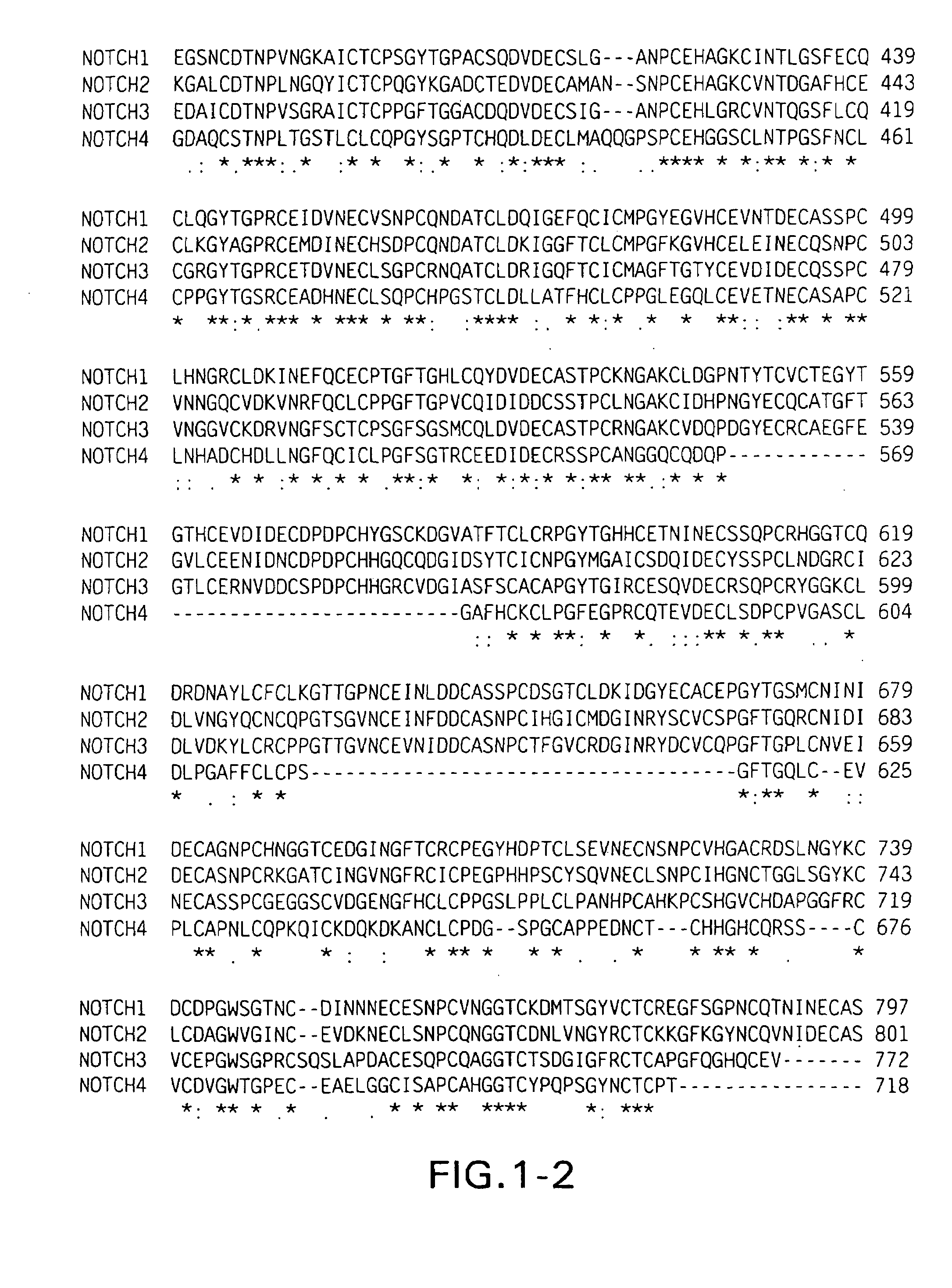NOTCH mutations leading to increased receptor signaling
a notch and receptor technology, applied in the field of human notch receptors, can solve the problems of uncontrolled growth and increased signaling, and achieve the effect of reducing the rate at which receptors are degraded and increasing notch-1 signaling
- Summary
- Abstract
- Description
- Claims
- Application Information
AI Technical Summary
Benefits of technology
Problems solved by technology
Method used
Image
Examples
examples
[0072]The present example provides results suggesting that approximately 65% of human T cell acute lymphoblastic leukemias (T-ALLs), including tumors from all major molecular oncogenic subtypes and those occurring in children and adults, have NOTCH-1 mutations. Most of these mutations occur in regions encoding an extracellular heterodimerization domain and as truncations removing a C-terminal PEST destruction box. The mutations cause increased NOTCH-1 signaling, and T-ALL cell lines bearing such mutations are growth arrested by NOTCH-1 pathway inhibitors.
[0073]Introduction
[0074]T cell acute lymphoblastic leukemia (T-ALL) is an aggressive neoplasm that preferentially affects children and adolescents. It is commonly associated with acquired chromosomal translocations and other genetic or epigenetic abnormalities, which lead to aberrant expression of a select group of transcription factors, including the helix-loop-helix proteins TAL1, TAL2, LYL1, and BHLHB1, the orphan homeobox protei...
PUM
| Property | Measurement | Unit |
|---|---|---|
| temperature | aaaaa | aaaaa |
| volume | aaaaa | aaaaa |
| volume | aaaaa | aaaaa |
Abstract
Description
Claims
Application Information
 Login to View More
Login to View More - R&D
- Intellectual Property
- Life Sciences
- Materials
- Tech Scout
- Unparalleled Data Quality
- Higher Quality Content
- 60% Fewer Hallucinations
Browse by: Latest US Patents, China's latest patents, Technical Efficacy Thesaurus, Application Domain, Technology Topic, Popular Technical Reports.
© 2025 PatSnap. All rights reserved.Legal|Privacy policy|Modern Slavery Act Transparency Statement|Sitemap|About US| Contact US: help@patsnap.com



